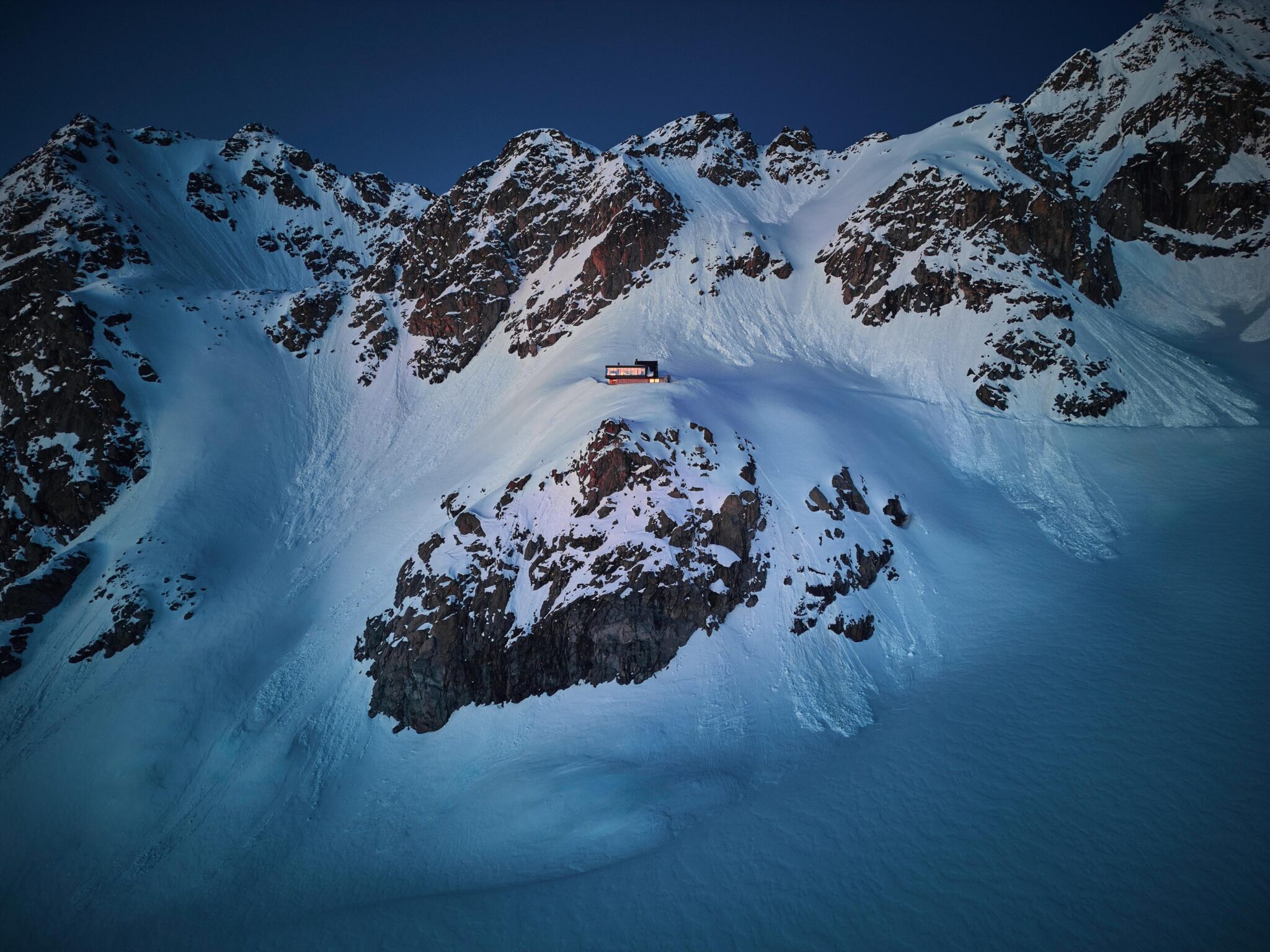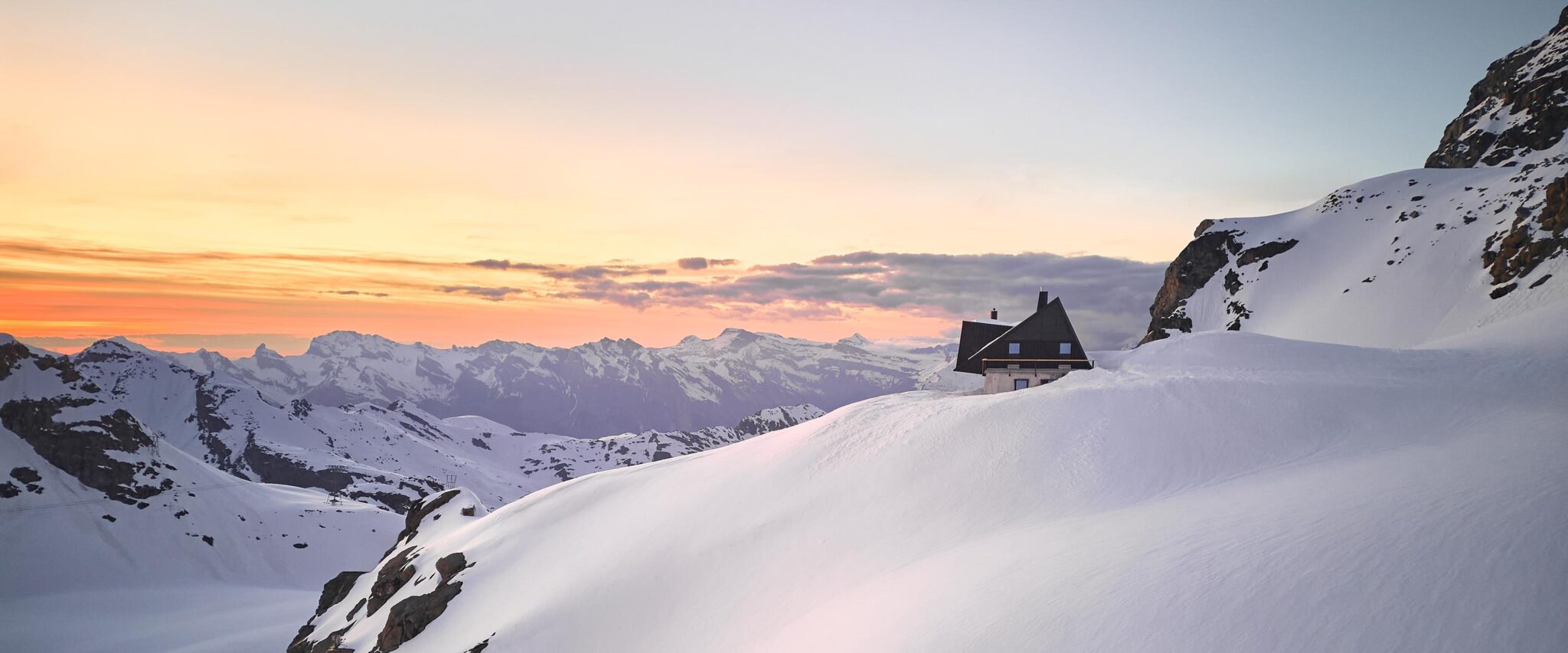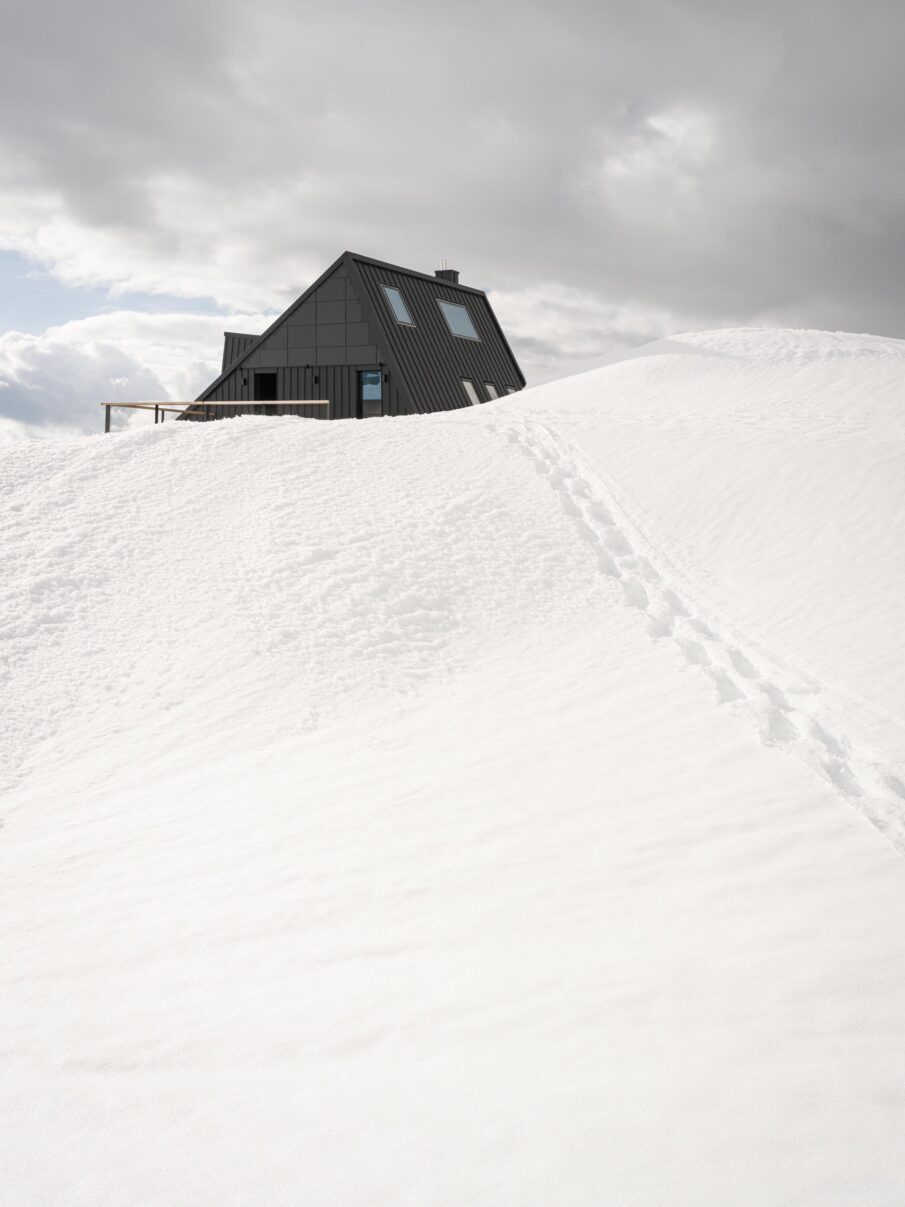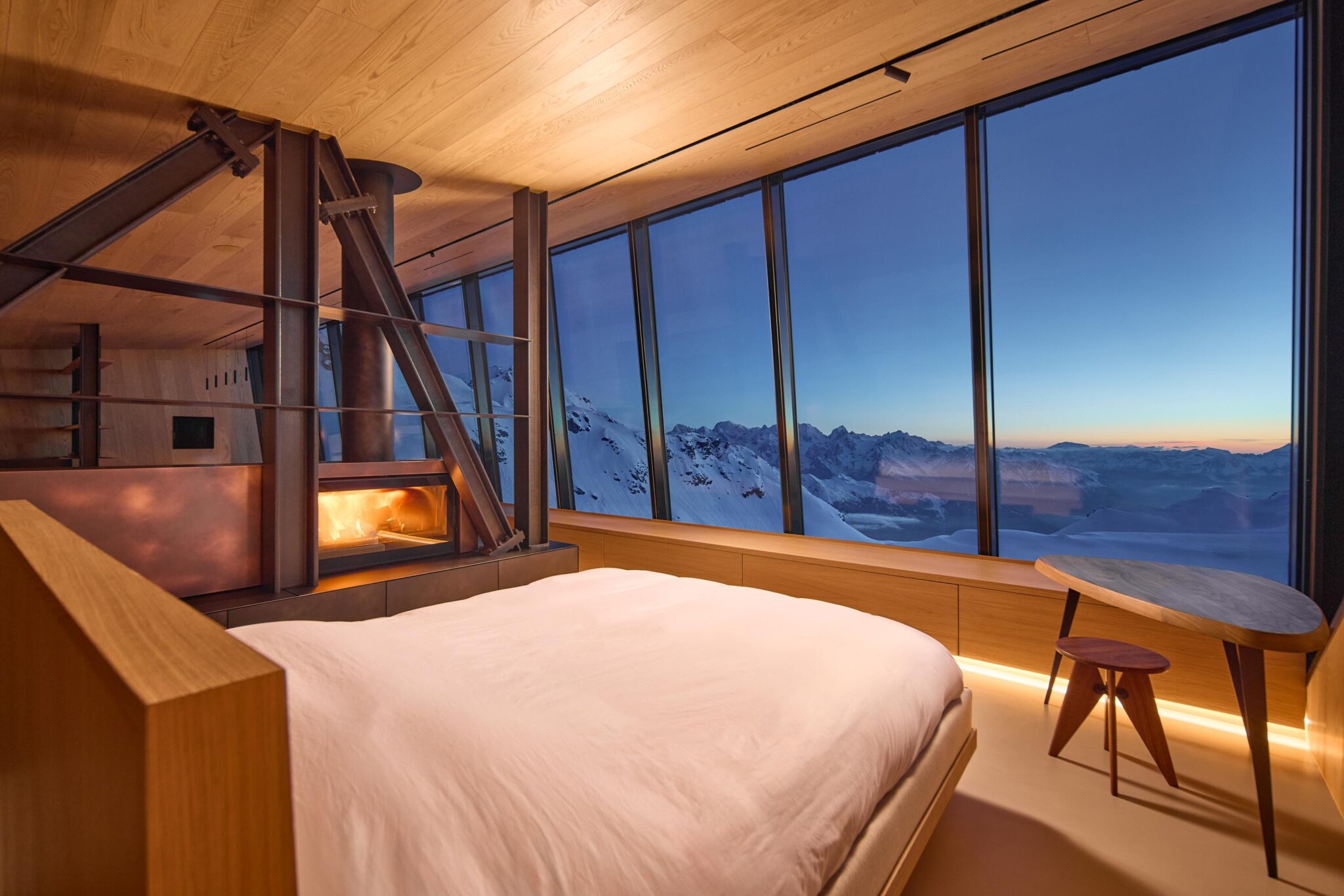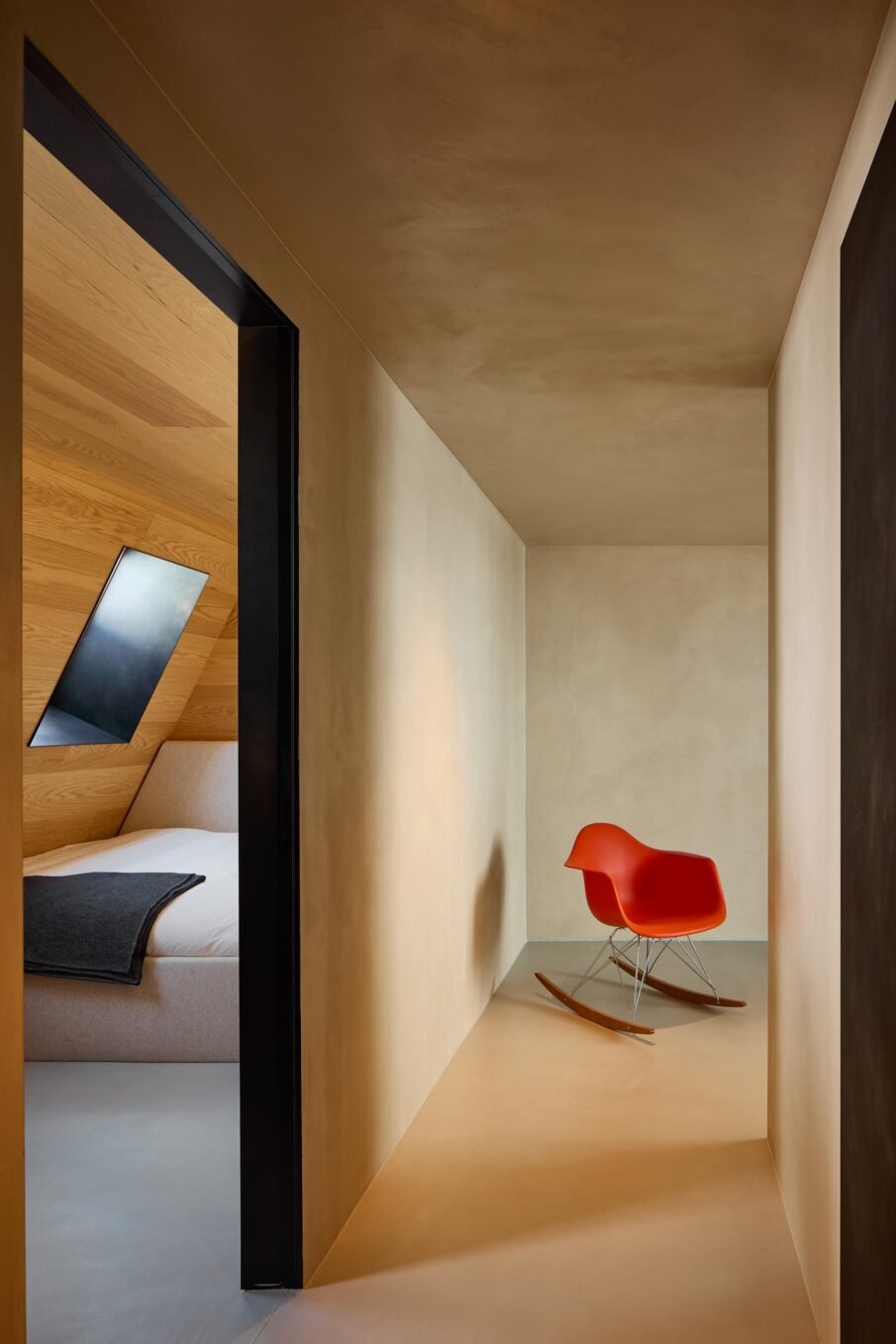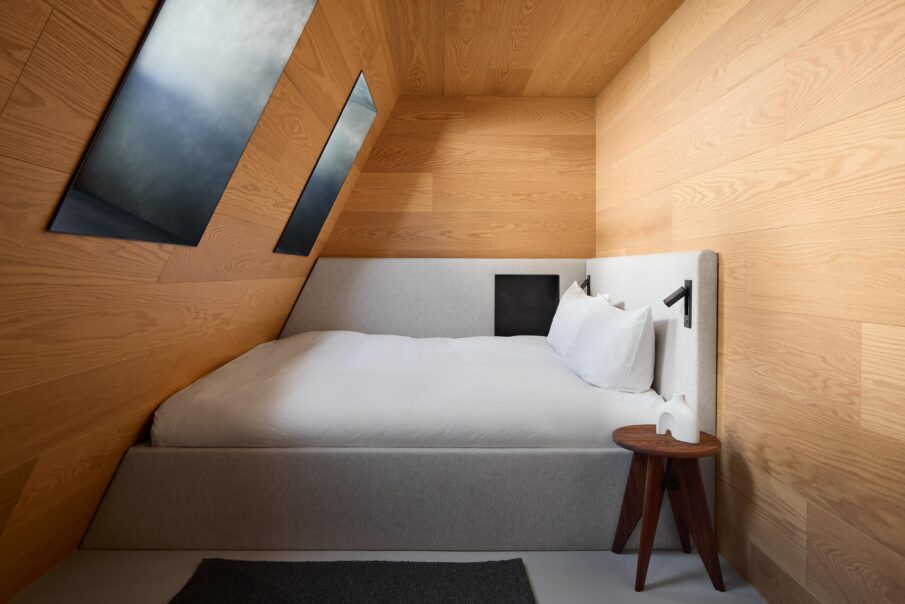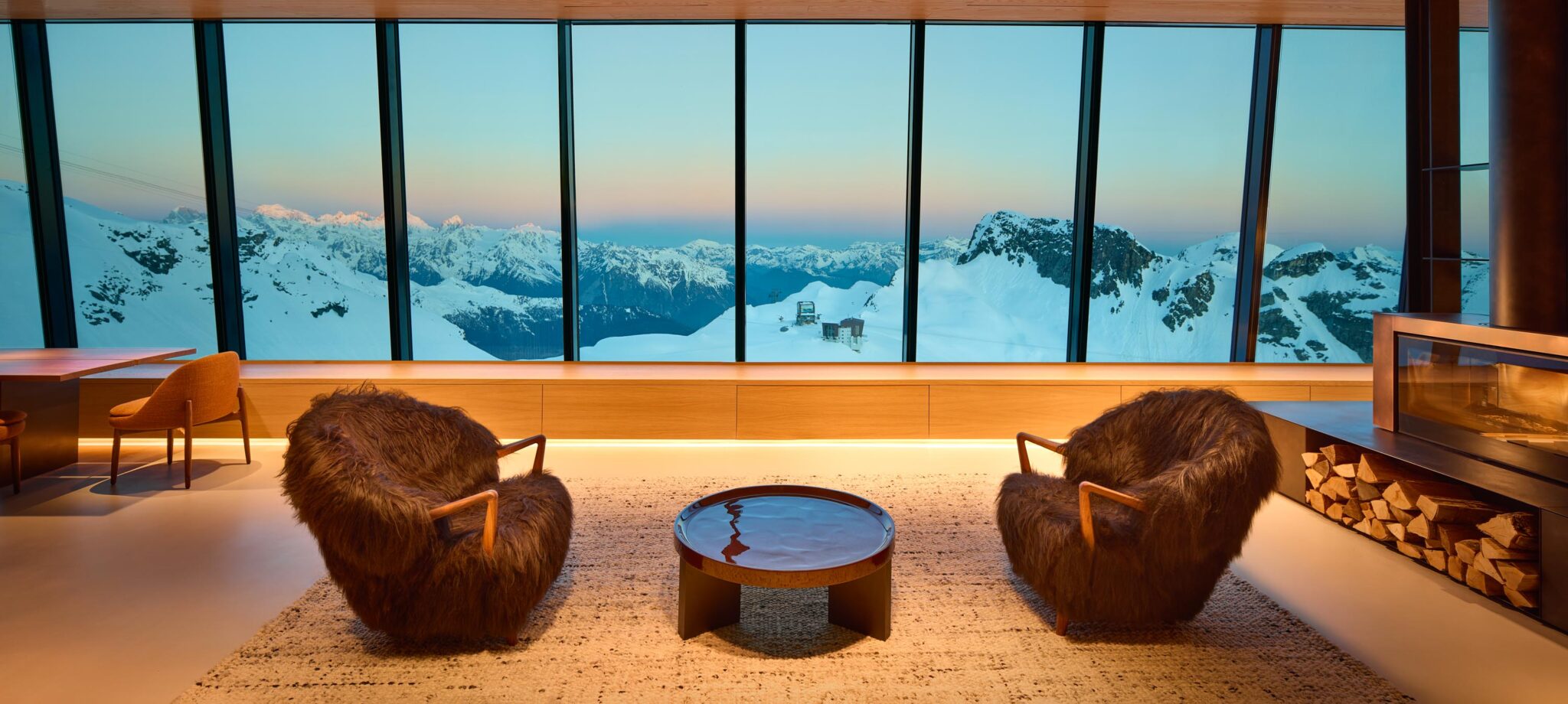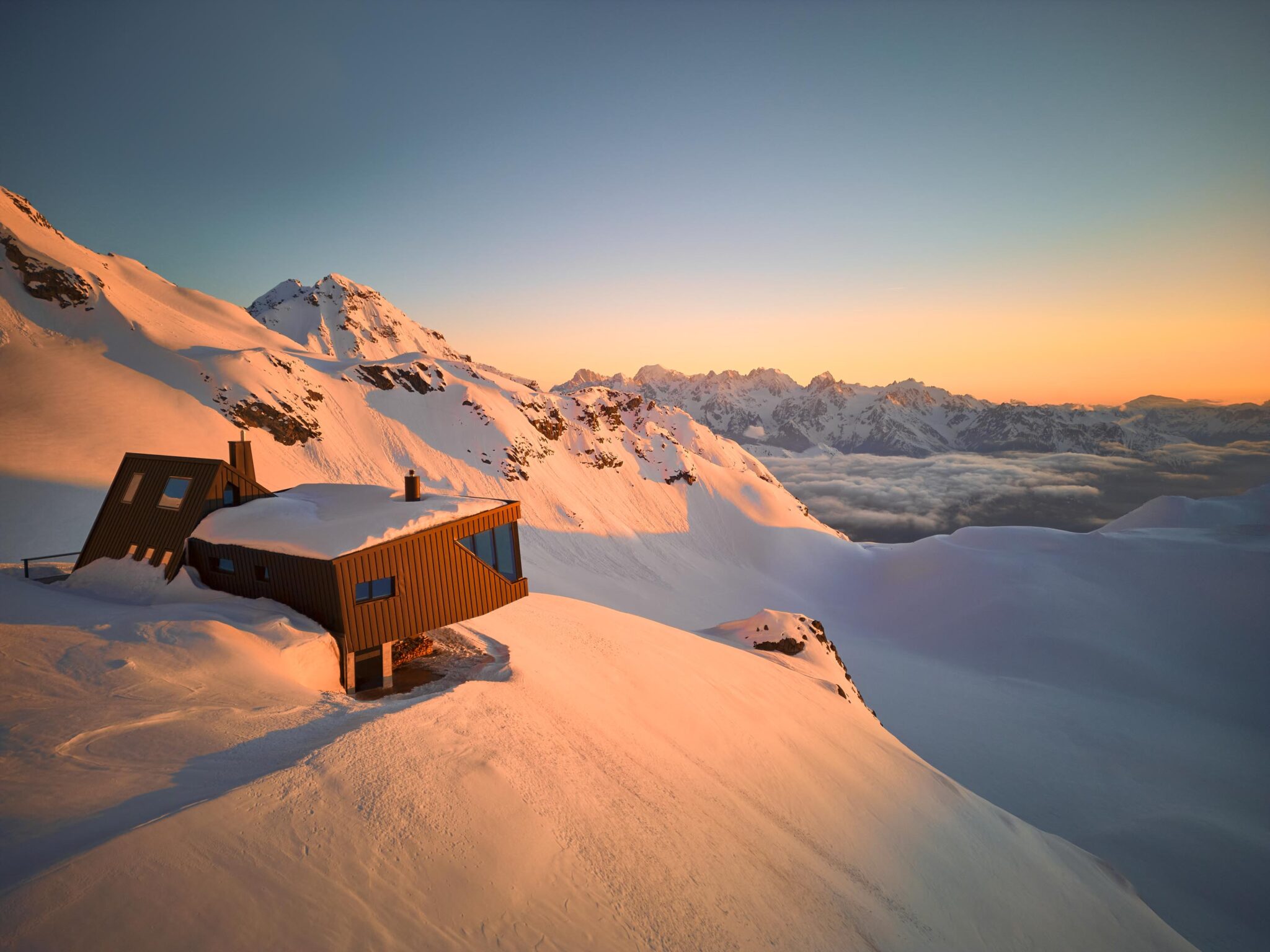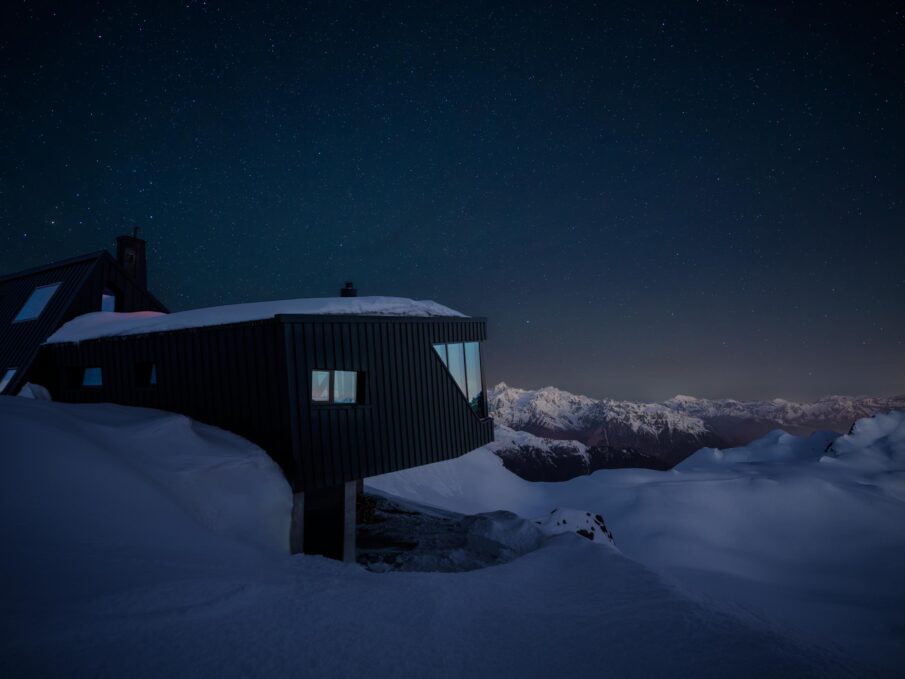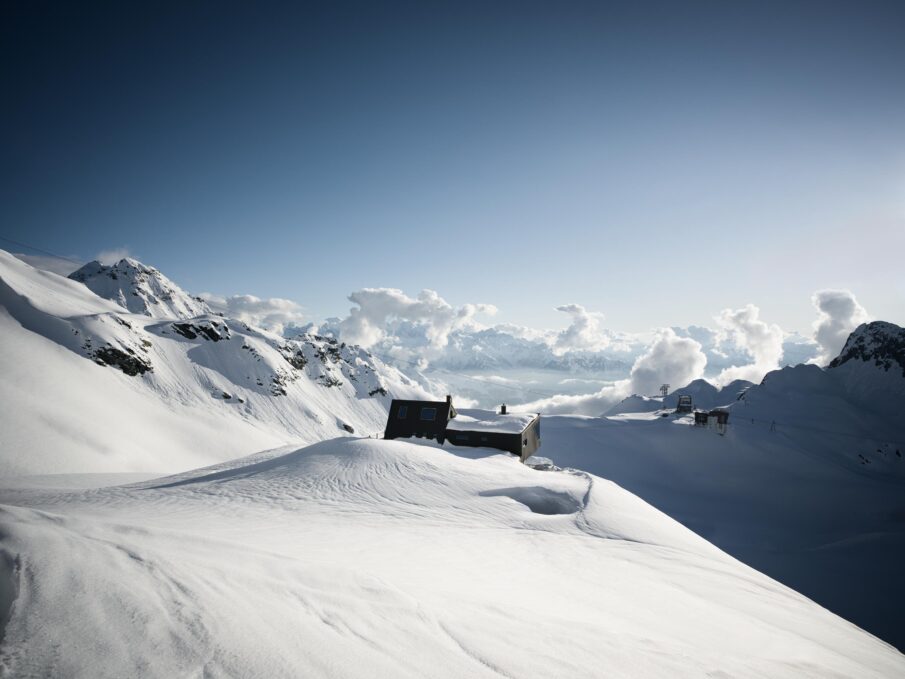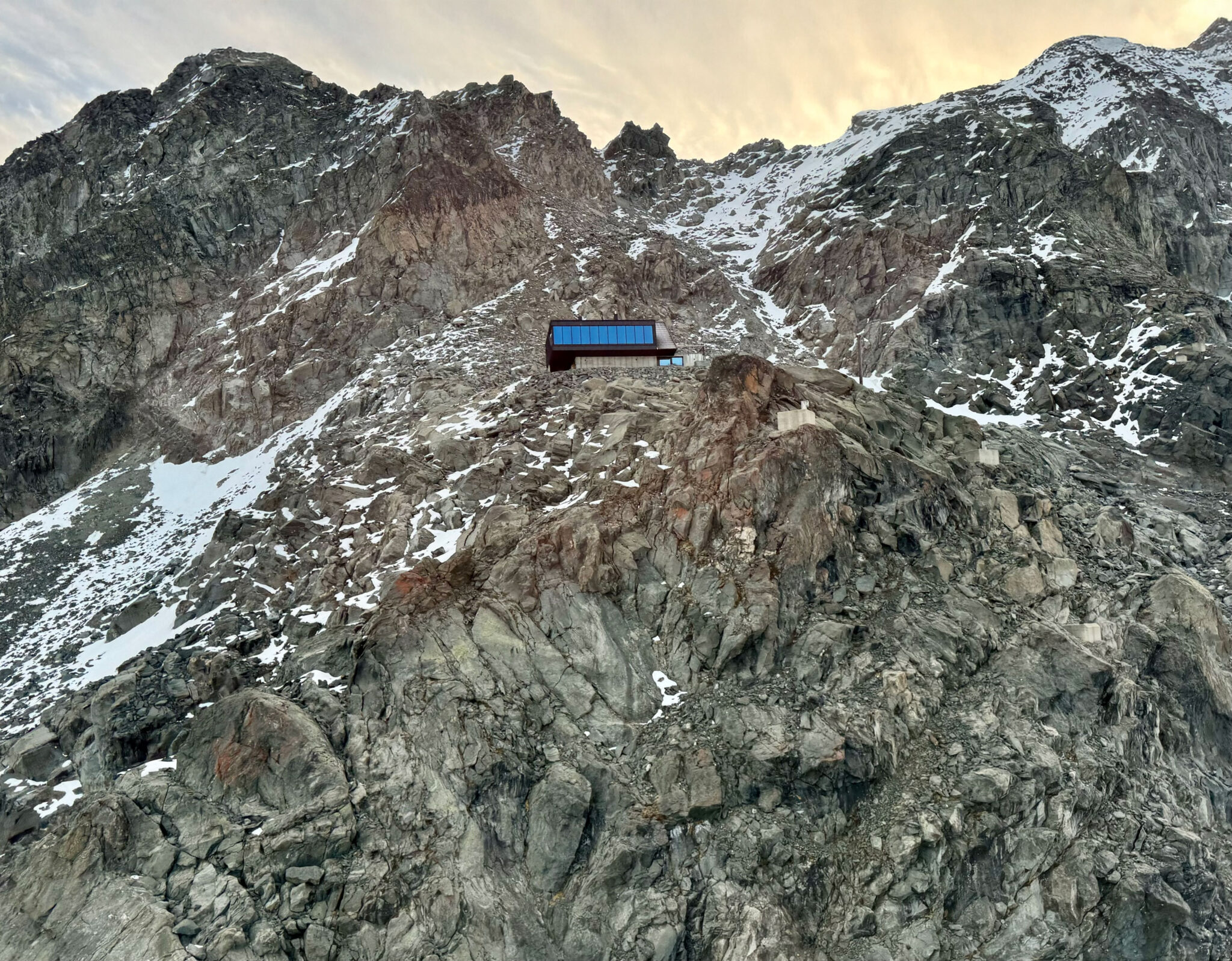Cabane du Glacier de Tortin
At 3,000 meters above sea level, Cabane du Glacier de Tortin is one of Europe’s highest privately owned cabins — and one of its most remote. Perched high in the Swiss Alps on a rugged outcrop surrounded by razor-sharp peaks, it redefines what it means to build, live, and find shelter in the harshest of environments. Both inhospitable and awe-inspiring, this is a place where nature rules absolutely — and architecture must earn its place.
